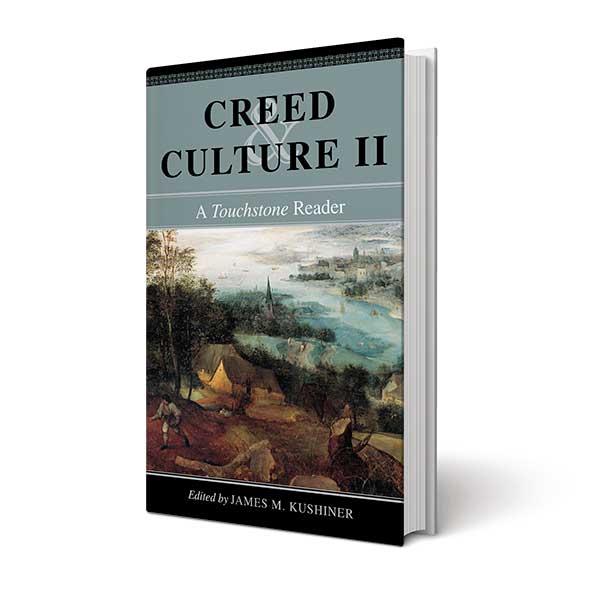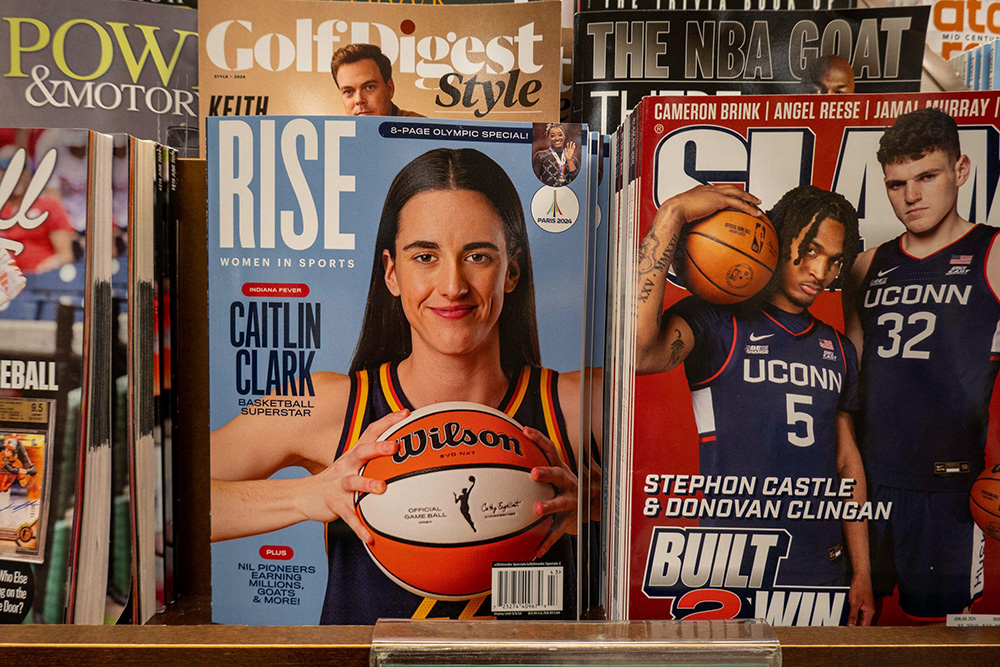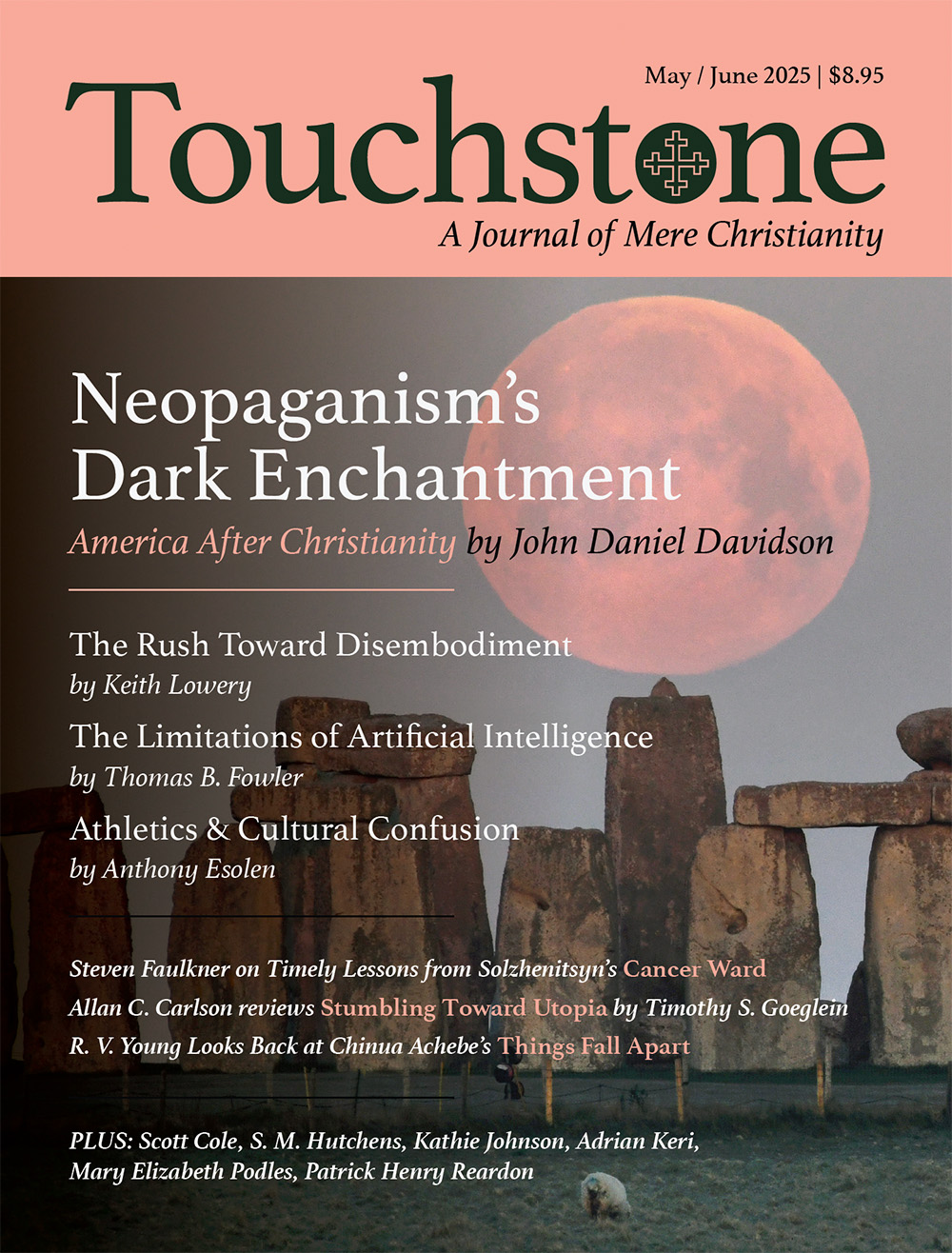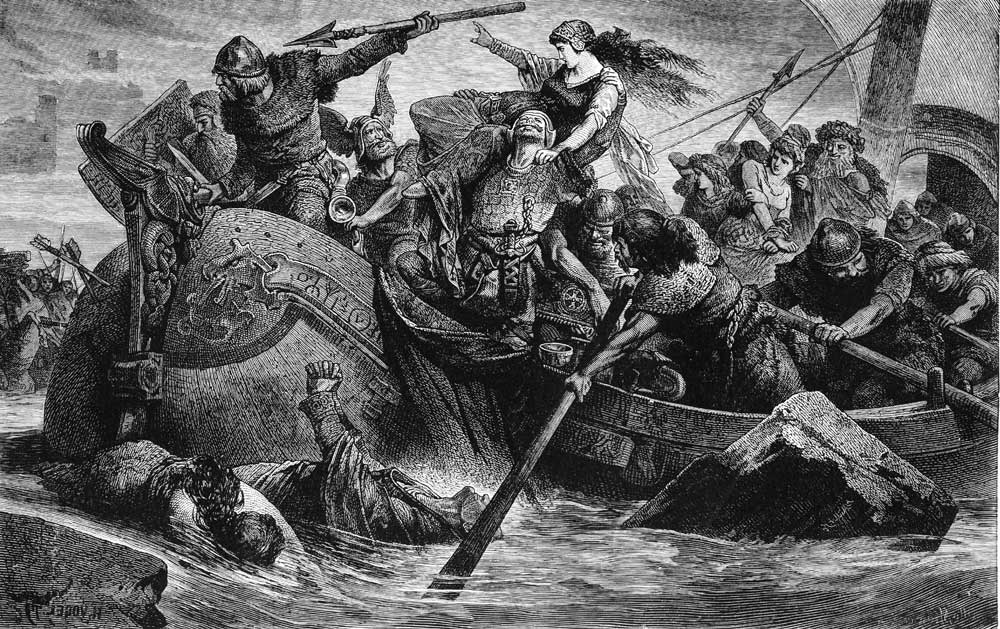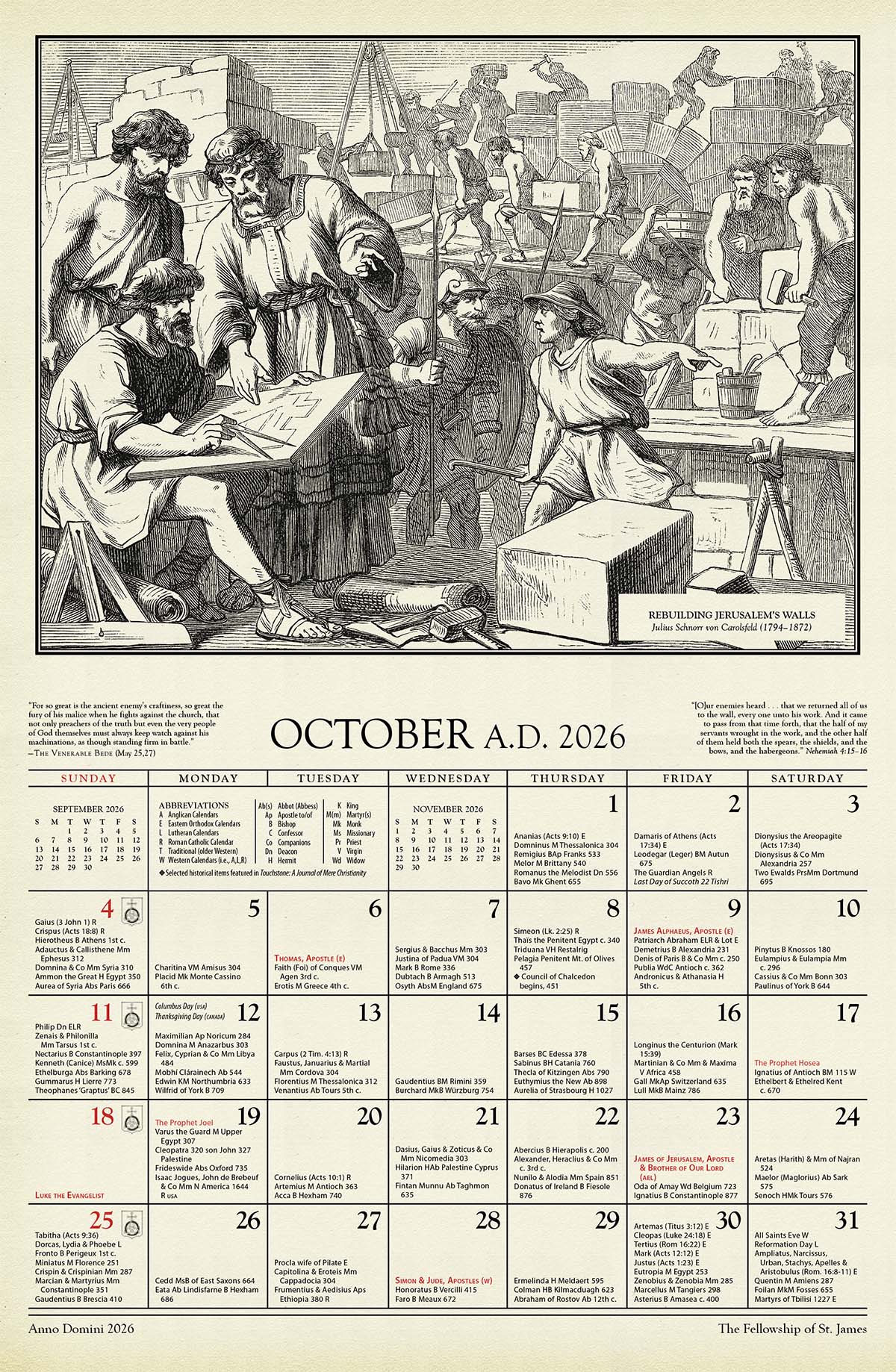Net Effects
Athletics & Cultural Confusion
by Anthony Esolen
The editors of Time magazine recently got tangled up in their own politics when they chose Caitlin Clark, a rookie guard in the WNBA, as the 2024 Athlete of the Year. Earlier in the year, Clark had been the overwhelming choice for best basketball player among college women when she led the nation in points per game and took her team, Iowa, to the national championship, which, however, they lost by twelve points to the undefeated South Carolina . . . Gamecocks? Yes, apparently.
The sticking point was not that Clark is a woman, but that she is white, and she has drawn a lot of attention to the WNBA, a league that has needed it. The league began in 1997, but it still has only 13 teams and plays a short regular season of 40 games. Eight teams make the playoffs, playing best of three in the first round, and best of five for the semifinals and the final. Scoring, despite the lighter and slightly smaller basketball and a three-point line that is over a foot and a half closer to the basket at the top of the key, is noticeably lower than in the men’s game. This difference is partly due to the shorter game, as the women play only 40 minutes to the men’s 48. But the men also take more shots from the field and make more of them than the women do. The men make these baskets against pillars of strength and stature, long-striding legs and whirling arms and muscles that seem to shift in their action as quickly as the light of an electric switch.
Clark had a fine season. She was WNBA Rookie of the Year, and she made the all-league first team. But though she led the league in assists, the statisticians did not rank her among the top 20 players. Her team, the Indiana Fever, finished 20–20 and lost its two playoff games. So there is some reason for other players to grouch at the attention she has gotten in the press. But if it were not for the press and its hype, where would women’s basketball be in the first place? For hype does get into the brain, and it often leads us to take phantasms for reality.
Let me illustrate. I made a comment I thought was well on the generous side, saying that Time’schoice was a bit silly because there were probably several hundred high-school boys’ teams for which Caitlin Clark could not start. Since there are more than 17,000 boys’ teams in the country, it should not have been a stretch to suggest that the top two or three percent of these would have Clark sitting on the bench, if on the team at all. The boys on the high-school national champions, from Link Academy in Branson, Missouri, average 6-foot-6, while the women of the WNBA champions, the New York Liberty (40–11, counting the playoffs), average 6-foot-1. Make the women use the full-size basketball, which is harder to handle, and put the New York Liberty on the same court with the Link Lions or with any of the several hundred teams competitive with them, and the only question is whether the women will get more than a couple of clear shots from the field. The boys will score at will. That is because they are boys—bigger, stronger, sturdier, and quicker than women, with much greater aerobic capacity.
Still, a couple of women took me to task for my comment. I think I know why. Most men and almost all women of our time are far removed from labor that requires great physical strength. I do not simply mean that they do not perform it. They are not in its vicinity. And the choreographed, computer-enhanced films they watch give girls the impression that a roundhouse kick, which is easy to anticipate, can send a man twice the kicker’s weight sprawling across the floor. Men, who can remember when, at 12 or 13 years old, they suddenly surpassed their mothers in strength, are less likely to make this error. You can have your own politics. You cannot have your own physics.
Some Inescapable Anthropology
Nor your own anthropology, and here too, many Christians miss the implications of much of what we have accepted as normal or constructive—and perhaps was so, once. Let us begin by assuming that grace builds upon and perfects nature. What the faith offers is the salvation of men, that is, human beings such as God made us, not whatever creatures we may imagine ourselves to be, and certainly not such as we are with all our cultural and political accidents twisting us out of shape. I am not talking about sin alone, but about the distortions and frustrations we suffer from being in a world of sin and folly, even when these happen not to coincide with any particular sin we have committed.
All sin is harmful, but so too are plenty of things that do not involve personal sin. It is bad for a parent to lock his child in his room all day, every day; it is a sin. But it is also bad for the child to be in that room all the time even if the door is open. It may or may not be sinful, but it is also not good, and such a child will be wizened and rickety and awkward around other children. As I say, you cannot have your own anthropology.
So let us consider this matter of sport, not just for itself, but as an example of poor discernment among Christians, of being content with not sinning, while not pursuing energetically what builds up the soul and promotes the common good. One of my critics said that I had failed to consider “the perfection of the female body,” and that the award could well be given to someone, male or female, who had attained the perfection whereof his or her body was capable. That is an interesting point of view. We might then look to dancers, figure skaters, and gymnasts for the beauty and grace of the female form in motion.
But not, I think, to basketball players. The look is gawky. Anyone who knows basketball will spot the deficiencies immediately: for example, when women take jump shots not from high over the head, but from the head or the chest, to get sufficient leverage from the full arms, rather than from the forearms or the wrists alone, as they heave the ball to the basket. No matter what the women do in this game, they will look like awkward imitations of boys.
And why should they imitate boys? Boys invent sports, and girls do not. This is an anthropological fact, universal in human cultures. Why so? The reasons, I believe, have to do with the nature of the male, and with normal relations between male and female. The boy’s body, with its higher metabolism and greater muscle mass, is restless without action, so unless he has been trained into sloth, he will be out and about, climbing trees, pushing boulders over the sides of hills, and other madcap things that may get him killed. He does so in consonance with the destiny of his sex. He may not know it yet, but such actions will attract the attention of girls, and rightly, because they are a sign, saying such things as, “I am not afraid to take chances,”“I am strong enough to be your provider and defender,” and “I can build the house while you make the home.”
The Meaning of Teams
The team sport adds another dimension to this phenomenon. A team, properly considered, is not a group of friends doing the same thing, such as gathering nuts, or even separate things that are not intimately coordinated, as when these three gather nuts while the other three gather berries. The team brings into being an action that is more than and other than the sum of its parts. It is not just that the guards and the tackles block the defenders from getting at the quarterback. Their actions, in their specific form, have meaning only in the context of the entire play, in which eleven men do eleven different things no one of which has any purpose or is even imaginable otherwise.
The relation is not one of juxtaposition. It is organic, or architectonic. As a liver or a heart is what it is only in relation to all the organs united in a body, or as joists can be joists only when they are set in relation to beams and studs and sills, so, too, are the actions of the members of a battalion, a hunting party, a work crew on a large construction project, or a football team on the field. Men must form such teams, or the people die.
Hence, the boy on the team says to the watching girl, by his actions, that he can stand on the front line with other men, that they respect him, that he can order his passions and his actions toward the common good, which is not simply a collective good, but a good that does not exist except as conceived and secured by the simultaneous working of the men, each man doing what has no purpose if done alone. In no culture in the world do women form hunting parties; what would be the point? For the woman’s body, the bearer of new life, must be protected; the individual man’s body is expendable.
Judged as a Whole
Must I make the obvious point? When girls play basketball, they are imitating boys, regardless of how good or how lame we may judge the imitation to be. They do so not to attract attention and admiration from boys—although most of their fans will be boys, simply because a lot of boys will watch any competition at all. Rather, the anthropological meaning of the girls’ basketball team seems to be this: We can do without the boys. Hence the notorious lesbianism that has prevailed among many college women’s teams and that prevails in the WNBA. That also says, “Except for your money, you can get lost.”
The particulars of basketball do not accord well with the female body, which is not made for leaping and landing hard. Think of the greater torque exercised on the knee when the wider-hipped female, with her more pronounced angle between the thigh and the calf, lands with force. But they also do not accord well with the meaning of the female body, built for bearing and nurturing children.
No doubt, a woman who is strong and fit will do well in childbirth. But how do you get there if you are committed first to the basketball team? How can a player for the WNBA get married after the ordinary way of nature and build up a home, when pregnancy puts her on the sidelines, lest she endanger the child she carries? Hence, she does not marry, or she “marries” another woman, and that woman bears a child through one or another evil method that eviscerates sex of its meaning. Or, if they are both players, they adopt a child, condemning him or her to fatherlessness, in order to gratify their feelings and to pursue a career doing what high-school boys do better, and what nobody needs girls and women to do at all.
The WNBA is, financially and otherwise, parasitic upon the NBA, which in 2023–2024 footed a bill of $40 million to cover the women’s league’s losses. The WNBA has never made a profit. The players must know this, and they must know also—though they must bury it beneath their consciousness—that they do not measure up to the better high-school boys, let alone the men. It is natural for people to resent others who make them feel inadequate. It is strangely pathological to insist upon doing things that make such resentment virtually inevitable. But what really perplexes me is why sensible Christians would give such an enterprise any support. I judge no individual players, some of whom no doubt are devout believers. It is the whole that I judge: its premises, its effects, and its assumption that the male and female sexes are not each made for the benefit of the other.
Time to Rebuild
I beg Christians to reject the notion that most of what is now called cultural is neutral in its moral tenor or in its social or spiritual effects. Obviously, it is not sinful to enjoy the freedom of sport. But in a pathological society, sport also tends to become pathological. I do not mean that there are sinners among us. I mean that the whole orientation of the society has grown mad. It is sinful to kill a child. But it is quite mad to celebrate killing a child. It is sinful to use obscene or profane language. But it is quite mad to promote and to celebrate obscenity and profanity. It is not sin, or not sin alone, that has left millions of young people unattached, with their prospects of family life fading. It is a general collapse of the foundational imperative of any society, which is to replace itself with children.
The question in our time is not only, “Is this in harmony with the kingdom of God?” It is also, “Does this help to rebuild the city of man?” For there is a great deal of rebuilding to do, in every area. That rebuilding must begin in our souls. Nor should we expect help from what lies roundabout us, though we may be grateful for the occasional promises of non-interference.
In the Aeneid, one of the native Italian kings whom Aeneas must battle is an outcast, hated by his own people for his cruelty. His name is Mezentius, and one of his methods of punishment is like what too many of us are doing to ourselves now. He would bind his enemy to a corpse, face to face. The contagion and the rot of the corpse would then spread to the living man. It was a slow and loathsome death. When Virgil wrote his epic, Augustus Caesar, his patron, was attempting, with at best mixed results, to return Rome morally to her old and traditional virtues, most especially pietas, the characteristic that Virgil assigns to Aeneas, as opposed to the Homeric wrath of Achilles and the fraudulent stealth of Odysseus.
Piety required that you acknowledge and you perform your duty to your father and mother, to your country, to your household gods, and to the great gods above. It was thus essentially conservative, stable, solid, self-denying, and reliable. Virgil, I am sure, would say that it gave life, because it brought your forefathers before your vision, not as dead but as alive and vital, as deities watching over your actions. Impiety is what binds you to death.
That is how, I think, we may view the ghastly thing with the rotten and liquefying contours of what used to be a human culture. It is a corpse. Severed from its own springs of life, both human and divine, it is now an agent of living death, not simply stifling life but spreading death, as if death were on the move, triumphant. Trust nothing that it brings. We cannot help being in its vicinity; else we should have to leave the world entirely, as St. Paul says. But our task is not simply to avoid infection. It is to build up again what has been demolished. We may as well start in one area as in another—in the arts as in education, in sport as in our modes of prayer, in what we read as in how we order the hours of the day. But we must start.
Anthony Esolen is Distinguished Professor of Humanities at Thales College and the author of over 30 books, including Real Music: A Guide to the Timeless Hymns of the Church (Tan, with a CD), Out of the Ashes: Rebuilding American Culture (Regnery), and The Hundredfold: Songs for the Lord (Ignatius). He has also translated Dante’s Divine Comedy (Random House) and, with his wife Debra, publishes the web magazine Word and Song (anthonyesolen.substack.com). He is a senior editor of Touchstone.
subscription options
Order
Print/Online Subscription
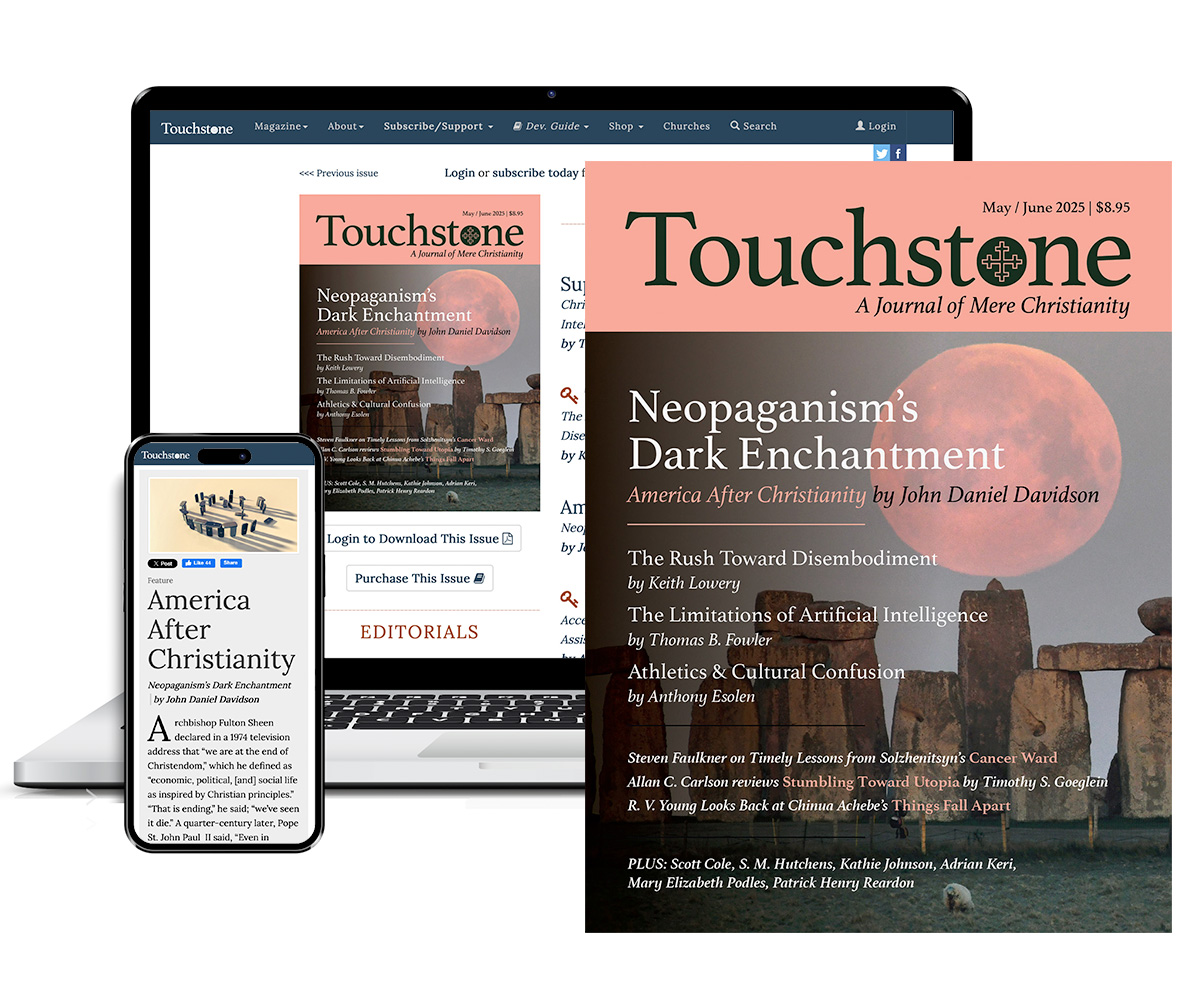
Get six issues (one year) of Touchstone PLUS full online access including pdf downloads for only $39.95. That's only $3.34 per month!
Order
Online Only
Subscription
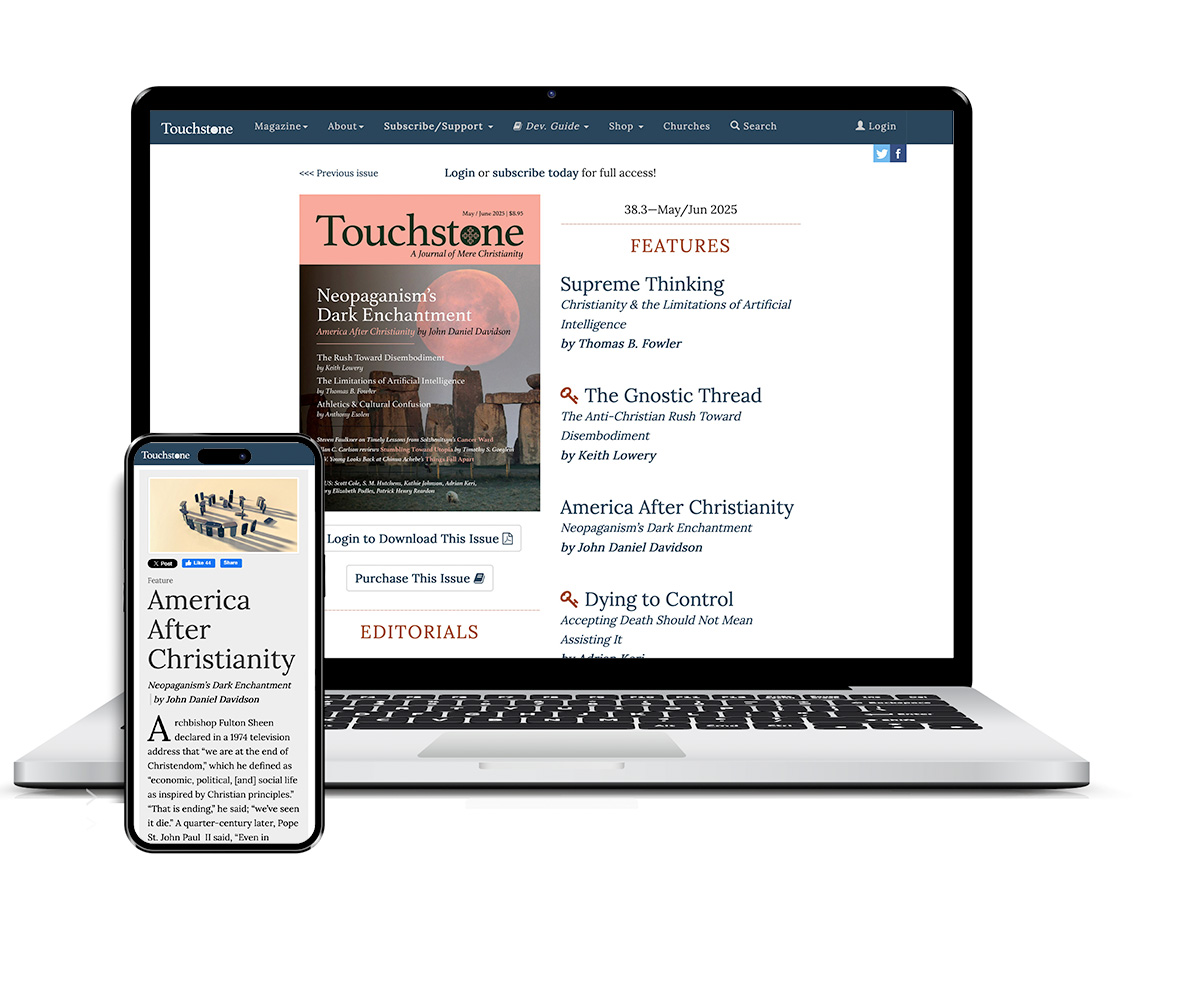
Get a one-year full-access subscription to the Touchstone online archives for only $19.95. That's only $1.66 per month!
bulk subscriptions
Order Touchstone subscriptions in bulk and save $10 per sub! Each subscription includes 6 issues of Touchstone plus full online access to touchstonemag.com—including archives, videos, and pdf downloads of recent issues for only $29.95 each! Great for churches or study groups.
Transactions will be processed on a secure server.
more from the online archives
calling all readers
Please Donate
"There are magazines worth reading but few worth saving . . . Touchstone is just such a magazine."
—Alice von Hildebrand
"Here we do not concede one square millimeter of territory to falsehood, folly, contemporary sentimentality, or fashion. We speak the truth, and let God be our judge. . . . Touchstone is the one committedly Christian conservative journal."
—Anthony Esolen, Touchstone senior editor




